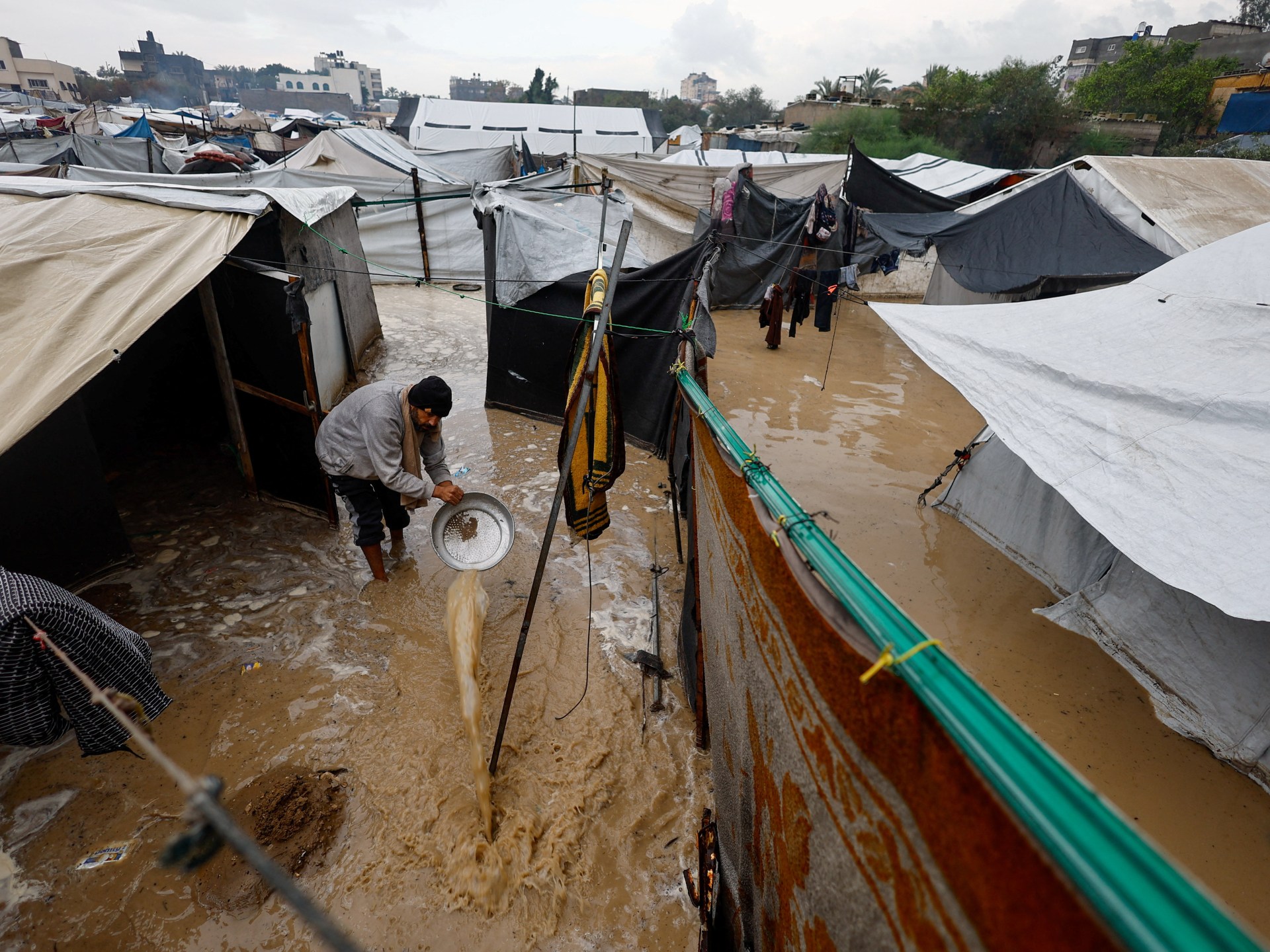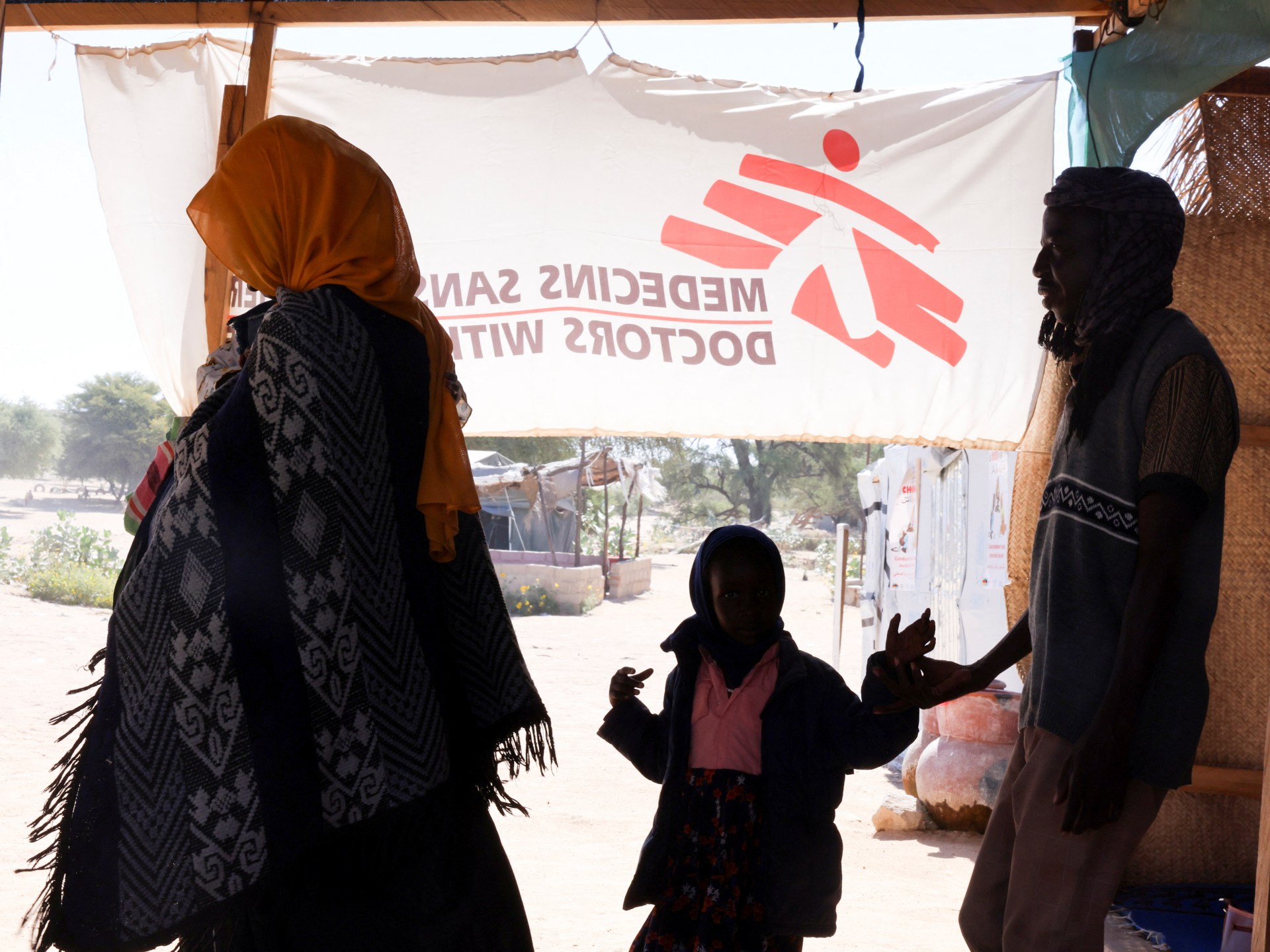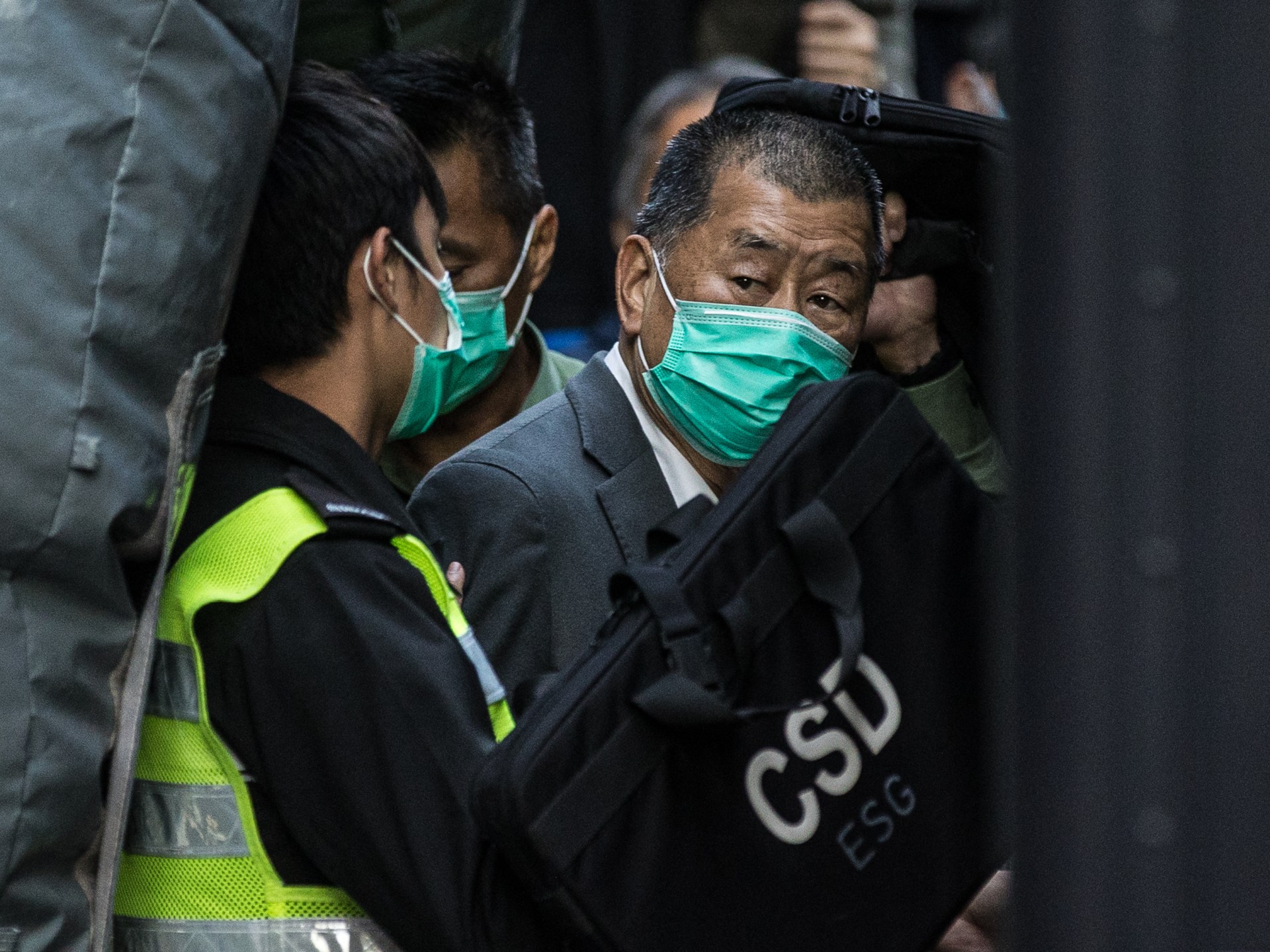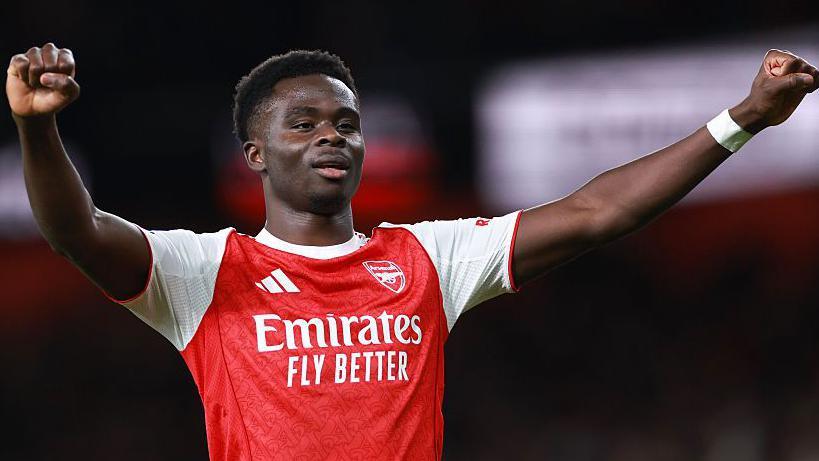LIVE: At least 10 people die in Gaza in past 24 hours amid storm



Coventry City boss Frank Lampard has won his second successive Championship manager of the month award.
The Sky Blues boss oversaw maximum points with five successive wins in November with his side currently five points clear at the top of the table.
Lampard said: “We got some fantastic results throughout November and I would like to thank all the players, staff and everyone involved for their continued hard work.
“We have a great togetherness and team spirit here and we’re all looking forward to the busy Christmas period and continuing our hard work.”

Once again Coventry have cause for a double celebration with striker Ellis Simms being named the player of the month, following hot on the heels of team-mate Brandon Thomas-Asante claiming the award in October.
The 24-year-old scored five goals in his three starts in November including a brace in each of the victories over Middlesbrough and Charlton, taking his tally to eight in all competitions so far this season.
“This was only possible because of my team-mates and the staff pushing standards every day,” said Simms.
“Individual awards come from team performances, and the results we’ve had make this extra special.
“I’ll take the confidence from it and keep giving everything for the club and the fans.”

It’s an image in the mind’s eye that’s hard to shift.
Stephen Robinson studying Wilfried Nancy’s Celtic as the hours tick by to Sunday’s Premier Sports Cup final. Forensic analysis in every waking hour. And for the St Mirren manager, suddenly, hope.
A little over a week ago, as Martin O’Neill, the great redeemer, exited the club in a fanfare of gratitude and optimism, Robinson would have to face a team content in its own skin again.
What he must see now is something altogether different.
He’s got to be seeing weakness and a chance. Everybody else can see it.
Nancy had two ways to go when he took over – he could have done a steering job with O’Neill’s team until the January transfer window, when he could start putting his own imprint on things.
On the back of losing to Heart of Midlothian on Sunday in his first game in charge, Nancy’s side have lost a second game, a 3-0 doing by Roma at a fast-emptying and, at the end, booing Celtic Park.
It’s not so much that they lost to Roma – O’Neill, Brendan Rodgers and Ange Postecoglou could all have lost to the Italians just as easily – but it’s the confusion that exists under Nancy now that’s intriguing, the speed with which O’Neill’s work has seemingly unravelled.
The fact that Nancy is now the first Celtic manager in history to lose his first two games. The reality that Thursday was only the second time in history that Celtic conceded three first-half goals at home in Europe.
The uneasy truth that Liam Scales’ own goal was the earliest concession in a European game at Celtic in more than a decade.
These are not the kind of records that Nancy came here to set. The brutal realities of life as a Celtic manager have descended on his head in double-quick time.
The crumbs of comfort wouldn’t feed a sparrow right now. They amount to Celtic not having caved in and conceded more goals in the second half against Roma. Nancy did his best to feast on that in the aftermath.
Has psychological damage been done this past week? You could argue that it has. Do Celtic look confused on the pitch? Yes, again. Will Nancy go back to basics on Sunday? Unlikely. Are Celtic fans more worried now about the League Cup final than they were a little over a week ago? In the case of some or many, undoubtedly.
Nancy was subjected to an awful lot of garbage in the wake of losing at home to Hearts, as if his tactics board was an affront to football, as if his perfectly normal trainers made him any less capable of doing his job.
The one truth about managing Celtic, or any other team with high demands, is that, if you are a winning manager, you can turn up in a tutu. Nobody would care. If anything, it would spark a trend – if you’re winning.
Now that he’s off to a losing start, the doubt is out there, the feeling that maybe Celtic should have stuck with O’Neill for a while longer or that, perhaps, it was a bit reckless to give control of the team to a manager with little experience and no exposure to the kind of suffocating heat of a Glasgow giant.
Again, it’s not just the losses that might be making some Celtic fans gulp. It’s the rapid reimagining of O’Neill’s team and the disintegration of the organisation that had been created.
We can make too much of what O’Neill achieved – his side weren’t always easy on the eye in his brief second spell – but they won all bar one game. They toiled badly at times, but they got the job done, they triumphed on the road in Europe, which is something Celtic rarely do.
Nancy has gone to three at the back, and with three left-footers, which is something that Derek McInnes gorged on at Celtic Park. He has tried to reinvent a left winger, Yang Hyun-Jun, into a right wing-back – and it hasn’t worked. He’s tried to recast Sebastian Tounekti, a left winger, into a left wing-back. That hasn’t worked either.
His players look confused in a system that doesn’t agree with them. It’s only two games and it’s a tiny sample size. In a normal world. Glasgow is not a normal world.
Judgement Day can come in the space of 45 minutes in this place. In the case of Russell Martin, the former Rangers head coach, it came before a whistle was blown in a competitive match for a section of the support. Things are different in this city.
Nancy had precious little time on the training ground with his players, but he still made gung-ho changes against Hearts when a steadier approach might have been wise.
Maybe if John Kennedy was still in the coaching team then he might have been persuaded to go more gently and more slowly, but Kennedy, a near-30-year veteran of the club as player and assistant coach, left when Rodgers went. Some clever counsel may have left with him.
The concern for Celtic folk is that Nancy gives the impression of a man wedded to a system of playing rather than adapting his system based on what he has in the dressing room. Square pegs don’t tend to fit into round holes, no matter how hard you try to hammer them in.

Nancy needs new blood, but he doesn’t need to perform the major surgery that Postecoglou needed to perform. He doesn’t need to rip it up and start again as the Australian had to do.
Nancy deserves time, deserves a January window, deserves some new players of his own choosing. You only get those things in the future if you win in the here and now. That was something that Martin, at Rangers, claimed he knew, but did he really? His medium to long-term “no gain without pain” mantra suggested otherwise.
It’s a case study that Nancy, even this early, could do with looking at. It’s unlikely that he will switch back to a more pragmatic O’Neillesque formation on Sunday, when St Mirren will attempt to make it a battle and expose the uncertainty in the Celtic team.
This might all come right. If Callum McGregor lifts the trophy at Hampden then everything becomes easier – for a day or two. It would give Nancy a lift, it would give him credibility and a chance to bond with supporters. He needs that trophy, big-time.

A women’s rights organisation has documented nearly 1,300 cases of endemic sexual and gender-based violence across war-torn Sudan, with the paramilitary Rapid Support Forces (RSF) blamed for the overwhelming majority of attacks.
The Strategic Initiative for Women in the Horn of Africa (SIHA) released findings on Thursday showing it had verified 1,294 incidents spanning 14 states since Sudan’s brutal civil war started in April 2023.
list of 3 itemsend of list
The disclosure underscores how sexual violence has become a systematic weapon in the war, the report said, which is one gruesome part of what humanitarian organisations have called the world’s largest humanitarian crisis.
The SIHA network attributed 87 percent of cases where perpetrators were identified as RSF fighters, describing the violations as “widespread, repeated, intentional, and often targeted” rather than contained incidents.
Rape accounted for more than three-quarters of documented incidents, while 225 cases involved children as young as four years old.
The group outlined a calculated three-stage pattern accompanying RSF territorial advances. Initial home invasions and looting accompanied by rape, followed by attacks in public spaces as control solidifies, and finally the long-term detention of women subjected to torture, gang rape and forced marriage.
“Women and girls from non-Arab tribes in Darfur, including the Masalit, Berti, Fur and Zaghawa, were directly targeted,” the report said. In Al-Gezira state, witnesses described RSF forces singling out lighter-skinned girls and women aged 14 to 30 as “trophies”.
Just last week, the Sudan Doctors Network, a medical monitoring organisation, documented 19 additional rape cases at al-Afad Camp in al-Dabba, where women fleeing the recently fallen city of el-Fasher were attacked by RSF forces. Two survivors are pregnant and receiving care.
The main fighting has shifted from Darfur, following the RSF capture of el-Fasher in October, to the vast central Kordofan region, which sits between territory controlled by the government-aligned Sudanese Armed Forces (SAF) in the east and RSF-held areas in the west.
The paramilitary force currently holds a commanding position and has been advancing on urban centres across West Kordofan.
After RSF forces captured the Heglig oilfield near the South Sudan border on December 8, both warring parties agreed to allow South Sudanese troops to secure the site, which serves as a critical economic lifeline for both countries.
South Sudan confirmed that seven of its soldiers were killed on Thursday in a drone strike by the SAF.
On December 5, RSF fighters attacked a preschool in Kalogi locality, killing more than 100 people, including 46 children. The attackers then targeted paramedics and civilians who rushed to assist victims in what authorities described as deliberate suicide drone strikes.
United Nations human rights chief Volker Turk warned days earlier that Kordofan faces “another wave of mass atrocities,” saying history was “repeating itself” after international warnings before el-Fasher’s fall went largely unheeded.
Since late October, the UN has documented at least 269 civilian deaths from bombardment, artillery fire and summary killings in the region, though communication blackouts suggest the actual toll is far higher.
The conflict has displaced 12.4 million people and forced 3.3 million to flee as refugees since erupting in April 2023.
Massad Boulos, a senior adviser to President Donald Trump, met this week with British Foreign Secretary Yvette Cooper, with both governments committing to “cut external financial and military backing for the belligerents” fuelling the war.
Washington sanctioned four Colombian nationals this week for running a recruitment network that has brought more than 300 military veterans to fight for the RSF, though the measures did not target a United Arab Emirates company that investigators say arranged the deployments.

Hong Kong’s High Court is set to hand down a verdict in the case of pro-democracy campaigner and media mogul Jimmy Lai next week, bringing an end to his lengthy national security trial.
Lai’s verdict will be delivered by a three-judge panel in a hearing that begins at 10am local time (02:00 GMT) on Monday, according to a court diary notice seen on Friday.
list of 3 itemsend of list
Founder of the now-shuttered pro-democracy Apple Daily newspaper, Lai, 78, is charged with foreign collusion under Hong Kong’s national security law, which Beijing imposed following huge and sometimes violent pro-democracy protests in 2019.
He previously pleaded not guilty to two counts of conspiring to collude with foreign forces, as well as a third count of sedition under a colonial-era law.
Authorities accuse Lai, who has been detained since December 2020, of using the Apple Daily to conspire with six former executives and others to produce seditious publications between April 2019 and June 2021.
He is accused of using his publication to conspire with paralegal Chan Tsz-wah, activist Andy Li, and others to invite foreign countries – including the United States, Britain and Japan – to impose sanctions, blockades and other hostile measures against Hong Kong and China.
Prosecutors also accuse Lai of stoking hatred against authorities in Beijing and Hong Kong through writing and publishing more than 150 critical op-eds in the outlet.
He faces life imprisonment if convicted.
Lai has been held in solitary confinement for more than 1,800 days, with his family saying they fear for his wellbeing and his health is deteriorating as he suffers from diabetes, high blood pressure, as well as heart palpitations that require medication.
In August, the court postponed closing arguments in his 156-day trial – which began in December 2023 – citing a “medical issue” involving the 78-year-old’s heart.
Authorities say Lai has received proper treatment and medical care during his detention.
Hong Kong was handed back to China in 1997 after more than 150 years under British colonial rule.
As part of the “one country, two systems” approach, Hong Kong officially operates a separate judicial system based on Common Law traditions, meaning Lai has greater legal protections than he would in mainland China.
But Hong Kong has experienced significant democratic backsliding in recent years, which accelerated following mass pro-democracy protests in 2019-20, which resulted in a harsh crackdown on dissent in the territory by Beijing.
In 2020, Chinese authorities introduced a draconian national security law to crush the protest movement, establishing secession, subversion, terrorism, and collusion with foreign organisations as crimes carrying hefty punishments.
Lai’s trial represents the most high-profile use of that law, with critics condemning his trial as politically motivated.
The Chinese and Hong Kong governments insist Lai is being given a fair trial and have said the legal process must be allowed to reach its conclusion.
But his case has drawn international scrutiny, including from US President Donald Trump, who has repeatedly promised to “save” Lai. In August, Trump promised to do “everything I can to save him”.
“His name has already entered the circle of things that we’re talking about, and we’ll see what we can do,” Trump told Fox News Radio.

When Arsenal host Wolves this Saturday it will be a meeting between the club sitting top of the Premier League and one rooted to the foot of the table.
It will also pit the English top flight’s second most potent attacking side against the worst defence.
And with second-placed Manchester City visiting a Crystal Palace side that go into the weekend occupying a top-four spot – and having lost once at home this season – could it be time to switch the captaincy away from Erling Haaland to Bukayo Saka?
The England forward has watched his value rise to £10.2m after some consistent performances, and the Gunners’ remaining December fixtures may present some opportunities for Saka, with a trip to Everton followed by home matches against Brighton and Aston Villa.
Meanwhile, Haaland has scored once in his last four league outings and his one shot in the box against Leeds and Sunderland were his worst displays since City’s opening home defeat to Tottenham in gameweek two.
So we are asking: Is Saka a genuine alternative to Haaland perma-captain this weekend?
Unsurprisingly, Haaland is the most selected player in FPL, appearing in 73% of teams.
But across gameweeks 12, 13 and 15 he mustered just six points due to a drop off in big chances. But given he is less likely to be rotated by Pep Guardiola, would it be a risk to remove him?
@ Let’s Talk FPL Andy said: “I’m almost certainly in the camp for Saka. Watching Wolves against Manchester United cemented the deal.
“They were so bad, and Arsenal are so much better than United, there could easily be four, five or six goals there. He has to be number one choice with that fixture. For me it is Saka or nobody.”
There’s momentum quickly gathering among serious FPL managers to captain Saka as the league leaders face bottom side Wolves at the Emirates.
It’s the best fixture on the calendar this season from an attacking perspective: Wolves are without a clean sheet this season, conceding a league-high 33 goals, including four at home to Manchester United last time out.
Saka has delivered an attacking return in three consecutive league games, and his underlying numbers are equally compelling, with 12 shots and three big chances.
We know he has vast routes to points, given his set-piece responsibility, including penalties, plus he’s never far away from the defensive contribution bonus points.
Saka was rested against Brentford, scoring from the bench, which bodes well for his minutes in this game. It’s a key game for the Gunners following defeat at Aston Villa last time out, with Manchester City reducing the gap at the top to just two points.
However, Haaland remains a very solid captaincy option and will likely be the most-backed player once again this week. It’s dangerous to go against him, because if he does deliver, you’ll likely be faced with red arrows.
A trip to Crystal Palace appears tough on paper, but Haaland has scored on all three visits to Selhurst Park, with Manchester City scoring a leading 15 goals in the last four gameweeks alone. Haaland has blanked in three of those last four games, with his one goal and two assists from this spell coming in the 5-4 win away at Fulham.
His underlying numbers remain high, with 11 shots in the box and five big chances on goal.

